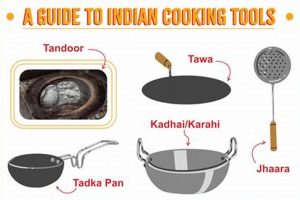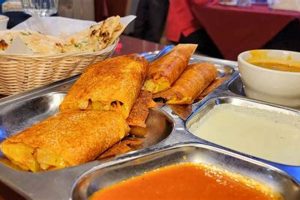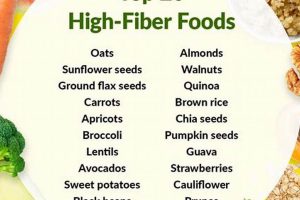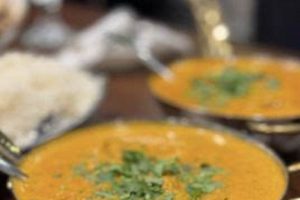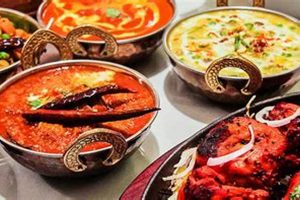The dietary intake of Psittacula krameri manillensis is crucial for its health and well-being. This typically comprises a mix of seeds, fruits, vegetables, and formulated pellets. An example includes a combination of sunflower seeds, apple slices, carrot sticks, and commercially available bird pellets.
Appropriate nourishment is essential for maintaining optimal physical condition, supporting feather development, and ensuring reproductive success. Historically, providing adequate sustenance has been a key factor in the successful domestication and propagation of this species within aviculture.
The following sections will detail specific components of an ideal dietary plan, explore potential nutritional deficiencies, and provide guidance on safe and appropriate feeding practices for these birds.
Dietary Recommendations for Psittacula krameri manillensis
Optimal nutrition is paramount for the health and longevity of Psittacula krameri manillensis. The following guidelines provide a framework for establishing a sound feeding regimen.
Tip 1: Prioritize formulated diets. These commercially available pellets are specifically designed to provide a balanced nutrient profile, minimizing the risk of deficiencies.
Tip 2: Supplement with fresh produce. Offer a daily selection of varied fruits and vegetables such as dark leafy greens, carrots, apples, and berries to provide essential vitamins and minerals.
Tip 3: Exercise caution with seed mixes. While seeds can be a component of the diet, they should not constitute the entirety. Seed-only diets are often deficient in vitamins A and D, as well as calcium.
Tip 4: Limit the provision of high-fat items. Foods like sunflower seeds and nuts should be offered sparingly, as excessive fat intake can lead to obesity and related health problems.
Tip 5: Ensure access to fresh water at all times. Water should be changed daily and the water bowl cleaned regularly to prevent bacterial contamination.
Tip 6: Avoid potentially toxic foods. Chocolate, avocado, caffeine, and onions are among the items known to be harmful to psittacines and must be strictly avoided.
Tip 7: Monitor food intake and adjust portions accordingly. Observe the bird’s weight and body condition to determine if dietary adjustments are necessary.
Tip 8: Introduce new foods gradually. A sudden change in diet can cause digestive upset. New foods should be introduced slowly and in small quantities.
Adherence to these guidelines will contribute significantly to the maintenance of optimal health, vibrant plumage, and enhanced overall well-being.
The subsequent section addresses potential health complications associated with improper feeding and strategies for addressing nutritional imbalances.
1. Formulated Pellets and Psittacula krameri manillensis Diet
Formulated pellets represent a cornerstone of appropriate nutrition for Psittacula krameri manillensis. Their significance stems from the consistent and balanced provision of essential nutrients, mitigating the deficiencies commonly observed in seed-based diets. The causative relationship is clear: exclusive seed consumption leads to nutritional imbalances, whereas formulated pellets actively address this by ensuring adequate intake of vitamins, minerals, and amino acids. For instance, a bird solely fed seeds may develop Vitamin A deficiency, predisposing it to respiratory infections. Conversely, a diet primarily composed of formulated pellets reduces this risk.
The practical application of this understanding translates into a discernible improvement in the health and longevity of captive Psittacula krameri manillensis. Veterinarians routinely recommend a diet consisting of at least 70% formulated pellets, supplemented with fresh produce. This dietary approach has demonstrated efficacy in preventing various ailments, including hypovitaminosis A, obesity (when combined with portion control), and calcium deficiencies. Moreover, the controlled composition of formulated pellets allows for precise management of nutrient intake, a crucial factor in addressing specific health conditions.
In summary, the utilization of formulated pellets is not merely a dietary preference but a fundamental requirement for maintaining the well-being of Psittacula krameri manillensis. While fresh foods provide valuable variety and enrichment, formulated pellets serve as the primary source of balanced nutrition. The challenge lies in encouraging birds to accept pellets, which often requires gradual introduction and positive reinforcement. Recognizing the paramount importance of formulated pellets, therefore, is essential for responsible care and promotes the long-term health of this avian species.
2. Fresh Produce Diversity
The inclusion of diverse fresh produce is a critical element of Psittacula krameri manillensis nutrition. Beyond the foundational role of formulated diets, the variety of fresh fruits and vegetables offered significantly contributes to their overall health and well-being.
- Vitamin and Mineral Provision
Different fruits and vegetables offer unique combinations of vitamins and minerals essential for various physiological functions. For example, dark leafy greens like kale provide Vitamin K and calcium, while red bell peppers are rich in Vitamin C and carotenoids. This assortment ensures the bird receives a broad spectrum of micronutrients, preventing deficiencies associated with monotonous diets. A limited selection may lead to insufficient intake of crucial nutrients, compromising immune function and overall health.
- Behavioral Enrichment
Presenting a variety of textures, colors, and shapes encourages natural foraging behaviors and provides mental stimulation. Offering foods like whole, unshelled peas or small fruits that require manipulation engages the bird and prevents boredom. This enrichment is crucial for preventing behavioral problems such as feather plucking, often linked to a lack of environmental stimulation. The act of exploring and processing different food items adds complexity to the bird’s daily routine.
- Fiber Intake and Digestive Health
Fresh produce is a significant source of dietary fiber, promoting healthy digestion and preventing gastrointestinal issues. Fiber aids in regulating bowel movements and supporting beneficial gut bacteria. Different types of fiber, found in varying fruits and vegetables, contribute to different aspects of digestive health. Insufficient fiber intake can result in constipation or other digestive disturbances. Optimal digestive health directly influences nutrient absorption and overall well-being.
- Antioxidant Properties
Many fruits and vegetables are rich in antioxidants, compounds that protect cells from damage caused by free radicals. These antioxidants bolster the immune system and reduce the risk of chronic diseases. Berries, for example, are known for their high antioxidant content. The inclusion of antioxidant-rich produce contributes to long-term health and vitality. Birds with diets deficient in antioxidants may be more susceptible to illness.
The diversification of fresh produce not only enhances the nutritional value of Psittacula krameri manillensis diets but also contributes to their psychological well-being. Integrating a wide array of safe and appropriate fruits and vegetables is therefore paramount for responsible and comprehensive care, promoting both physical and mental health.
3. Seed Limitation
Seed limitation, in the context of Psittacula krameri manillensis nutrition, refers to the practice of restricting the proportion of seeds within their overall diet. This approach acknowledges that while seeds are a natural component of their food intake in the wild, relying on seeds as a primary or exclusive food source in captivity poses significant health risks.
- Nutritional Imbalance
Seed-based diets are inherently deficient in several crucial nutrients, notably Vitamin A, Vitamin D3, calcium, and certain amino acids. An over-reliance on seeds leads to nutritional imbalances, predisposing the bird to various health issues, including hypovitaminosis A, which can manifest as respiratory infections and poor feather quality. Additionally, the high fat content of many common seeds contributes to obesity and related complications.
- Behavioral Implications
While foraging for seeds can provide some behavioral enrichment, an unlimited supply eliminates the need for active seeking and exploration. This lack of mental stimulation can lead to boredom, feather plucking, and other undesirable behaviors. Controlled seed allowance encourages foraging instincts without compromising nutritional well-being.
- Health Consequences
Long-term consumption of a predominantly seed-based diet has demonstrable negative health outcomes. These include liver disease (hepatic lipidosis) due to excessive fat intake, kidney problems, and a weakened immune system. These conditions can significantly shorten the lifespan and reduce the quality of life of Psittacula krameri manillensis.
- Alternative Strategies
Effective seed limitation involves replacing a significant portion of the seed intake with formulated pellets and fresh produce. Pellets offer a balanced nutrient profile, while fruits and vegetables provide essential vitamins, minerals, and fiber. Seeds can be used as occasional treats or rewards to encourage foraging behaviors, but they should not constitute the bulk of the diet.
Seed limitation is not about eliminating seeds entirely but rather about understanding their limitations and integrating them responsibly into a balanced dietary plan. The goal is to mimic the nutritional diversity found in their natural environment while mitigating the risks associated with excessive seed consumption in captivity. Successfully implementing seed limitation strategies contributes significantly to the long-term health and well-being of Psittacula krameri manillensis.
4. Water Availability
Water availability is intrinsically linked to the effectiveness and utilization of food consumed by Psittacula krameri manillensis. Water serves as a critical component in digestion, nutrient absorption, and waste elimination. Dehydration directly impairs these processes, diminishing the nutritional benefits derived from food intake. For instance, inadequate water intake can lead to impaction in the crop, a pouch-like structure in the esophagus where food is initially stored, thereby disrupting digestion. Similarly, water is essential for transporting nutrients from the digestive system to various tissues and organs. Insufficient hydration compromises this delivery system, resulting in decreased energy levels and impaired physiological function.
Furthermore, water plays a crucial role in maintaining optimal kidney function, facilitating the excretion of metabolic waste products generated during food metabolism. Dehydration concentrates these waste products, placing undue stress on the kidneys and potentially leading to kidney damage or failure. The type of “indian ringneck food” further influences water requirements; diets rich in dry components, such as seeds or formulated pellets, necessitate a higher water intake compared to diets with a greater proportion of fresh, water-rich produce. Owners should observe their bird’s drinking habits and fecal consistency to gauge hydration levels. Sunken eyes or dry, pasty droppings indicate potential dehydration and warrant immediate attention. A practical example involves monitoring water consumption following a change in diet from predominantly fruits and vegetables to mostly dry pellets; an increase in water intake is expected and essential.
In conclusion, consistent access to clean, fresh water is not merely an ancillary aspect of Psittacula krameri manillensis care but rather an indispensable element directly impacting the nutritional value derived from their “indian ringneck food”. Understanding the interplay between hydration and food utilization underscores the importance of diligent monitoring and proactive provision of water to ensure the bird’s health and well-being. The challenge lies in recognizing subtle signs of dehydration and adjusting water availability accordingly, particularly in response to dietary changes or environmental factors.
5. Toxicity Avoidance
Toxicity avoidance is a critical aspect of responsible Psittacula krameri manillensis care, directly impacting the safety and suitability of “indian ringneck food”. Prudent selection and preparation of ingredients are essential to prevent exposure to harmful substances.
- Avocado Toxicity
Avocado, while a nutritious food for humans, contains persin, a fungicidal toxin known to be harmful to birds. Ingestion can lead to myocardial damage, respiratory distress, and even death. Careful scrutiny of ingredient lists and complete avoidance of avocado is imperative when selecting or preparing components of “indian ringneck food”.
- Chocolate Toxicity
Chocolate contains theobromine and caffeine, methylxanthines that are toxic to birds. Even small amounts can cause hyperactivity, tremors, seizures, and cardiac arrest. Strict avoidance of chocolate, including all forms (dark, milk, white), is essential to ensure the safety of the dietary intake.
- Onion and Garlic Toxicity
Onions and garlic contain compounds that can damage red blood cells in birds, leading to anemia. The effects are cumulative, so even small, repeated exposures can cause significant harm. All members of the Allium genus should be strictly excluded from “indian ringneck food” preparations.
- Xylitol Toxicity
Xylitol, an artificial sweetener commonly found in sugar-free products, is highly toxic to birds. Even small quantities can cause a rapid release of insulin, leading to hypoglycemia, seizures, liver failure, and death. Rigorous inspection of ingredient labels is essential to avoid accidental exposure through seemingly harmless food items.
The examples above highlight the importance of a thorough understanding of potential food-related toxins. Responsible provision of “indian ringneck food” necessitates a proactive approach to toxicity avoidance, ensuring the safety and well-being of these avian companions through careful ingredient selection and preparation.
Frequently Asked Questions Regarding Psittacula krameri manillensis Dietary Needs
The following section addresses common inquiries concerning the provision of appropriate sustenance to Psittacula krameri manillensis, aiming to clarify misconceptions and provide guidance for optimal avian nutrition.
Question 1: Is a solely seed-based diet sufficient for Psittacula krameri manillensis?
No. A solely seed-based diet is inherently deficient in essential nutrients such as Vitamin A, Vitamin D3, and calcium. Reliance on seeds as the primary food source predisposes the bird to nutritional deficiencies and associated health complications.
Question 2: What percentage of the diet should consist of formulated pellets?
Formulated pellets should ideally constitute at least 70% of the daily food intake. This ensures a balanced provision of vitamins, minerals, and amino acids, minimizing the risk of nutritional imbalances.
Question 3: How frequently should fresh fruits and vegetables be offered?
Fresh fruits and vegetables should be offered daily, providing a diverse selection to ensure a broad spectrum of micronutrients. Variety is crucial for both nutritional completeness and behavioral enrichment.
Question 4: Are nuts a suitable component of the diet?
Nuts can be offered in moderation as occasional treats, providing a source of healthy fats. However, their high fat content necessitates careful portion control to prevent obesity and related health problems.
Question 5: What foods are considered toxic to Psittacula krameri manillensis and must be avoided?
Foods known to be toxic include avocado, chocolate, onions, garlic, caffeine, and foods containing the artificial sweetener xylitol. Ingestion of these substances can lead to severe health complications and potentially death.
Question 6: How can dietary changes be implemented safely?
Dietary changes should be introduced gradually to avoid digestive upset. New foods should be offered in small quantities, and the bird’s response should be closely monitored. Abrupt dietary shifts can lead to digestive disturbances and refusal to eat.
Consistent adherence to these guidelines will contribute significantly to the maintenance of optimal health, vibrant plumage, and enhanced overall well-being. Providing appropriate “indian ringneck food” is of paramount importance.
The following section offers a deeper dive into the practical application of these guidelines, including recommendations on specific “indian ringneck food” items.
Optimizing Psittacula krameri manillensis Well-being Through Dietary Management
This exploration of Psittacula krameri manillensis sustenance has underscored the vital role of informed nutritional practices. Key points include the necessity of formulated pellets, the importance of diverse fresh produce, the risks associated with excessive seed consumption, and the ever-present need for fresh water. Furthermore, the potentially devastating effects of food-borne toxins necessitate constant vigilance.
The insights presented are intended to empower caregivers to make informed decisions concerning the dietary needs of these birds. Prioritizing nutritional excellence directly translates to enhanced health outcomes and extended lifespans. Continuous learning and adaptation to the evolving understanding of avian nutrition remain essential for optimal care.



